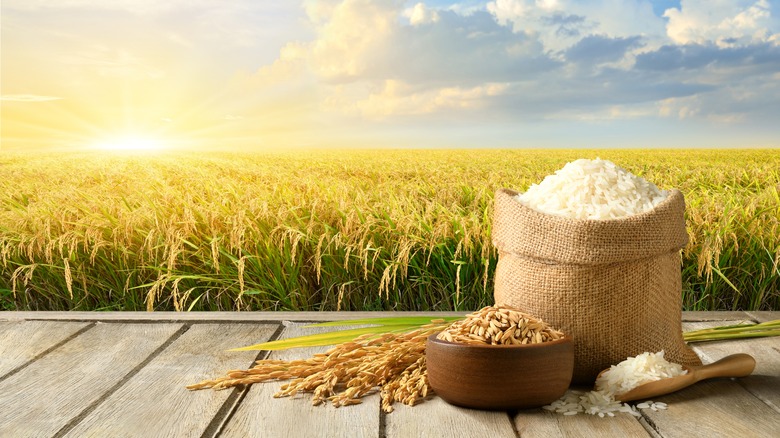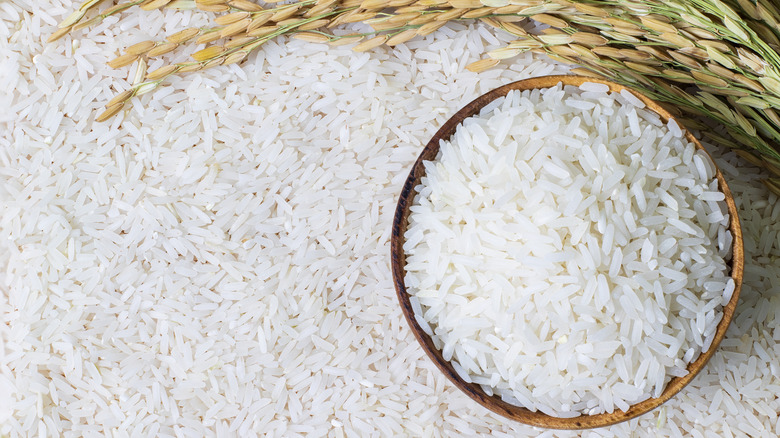We're Not Sure If You Noticed, But There's A Major Rice Shortage Right Now
It hasn't always been easy to get ahold of certain ingredients in the past few years, and this year is no exception: A number of food shortages have already happened in 2023. Not to be outdone, rice has recently joined the list with its largest shortage in over two decades. So, if you've been struggling to find your favorite Rice A Roni flavors, you aren't alone.
In an interview with CNBC, expert Charles Hart explained that the biggest effect we're seeing in the U.S. is heightened prices. Today, rice averages $17.55 per cwt (approximately 100 pounds), as compared to $13.12 in 2021, and $10.86 in 2019. Hart said we should expect prices to continue to rise into 2024, at which point the rice industry will recover and come out on top with surplus and lower prices.
Of course, all this leads us to wonder how a rice shortage could have happened in the first place, if 510 million tons were produced in 2022 alone. Well, like every other shortage we've seen recently, it ties back to troublesome weather, population growth, and the war in Ukraine.
Factors working against the world's rice supply
In the same way that Ukraine's grain deal with Russia last year didn't help much with shortages, the same conflict also increased demand for alternative crops –- like rice. And as we all know from economics class, the combination of high demand and low supply drives up prices.
To make matters worse, population growth (particularly in Asia) could very well start to outpace rice supply. According to the Food and Agriculture Organization, Asia eats (and makes) about 90% of the world's rice supply, and an estimated 700 million tons will be needed to fulfill demand by 2025. Again, high demand means higher prices.
All that being said, climate change is majorly affecting crop yields, including rice. Parts of Pakistan and China were hit with extreme flooding in 2022, while other parts suffered droughts. Needless to say, rice crops suffered greatly, with production dropping by as much as 31%. Hopefully 2023 will bring better weather, and consequently, better rice yields.

